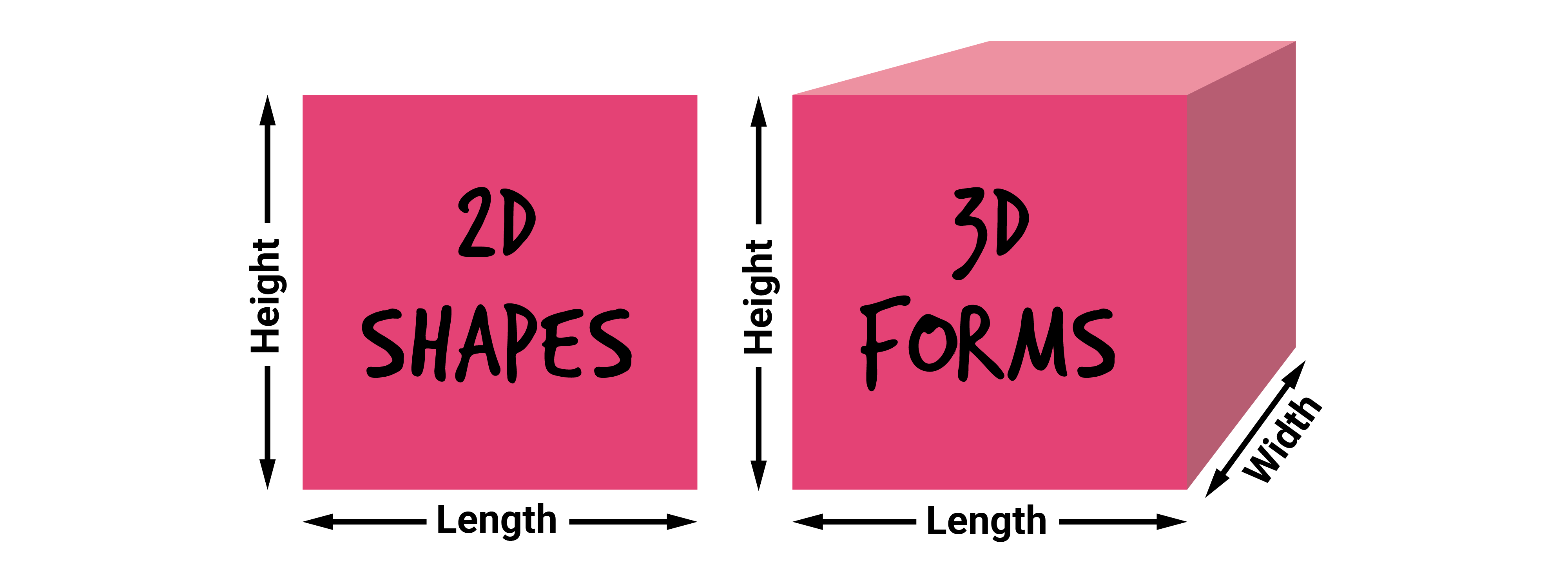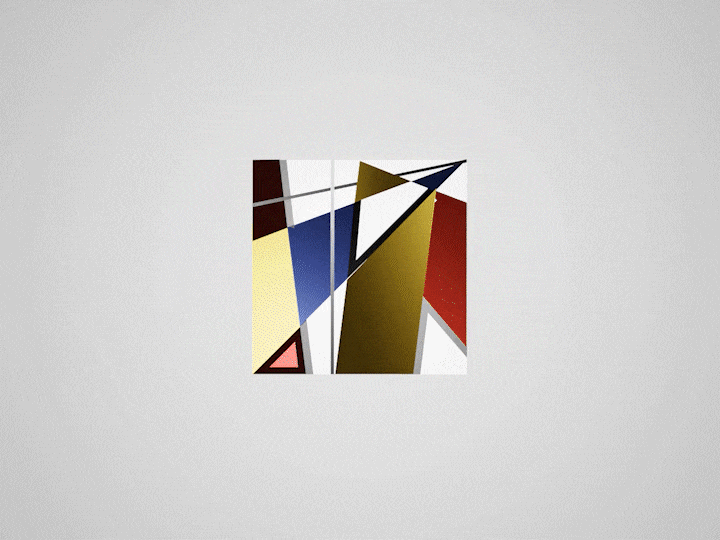
2.3 Elements of Visual Compositions
Designers are known for their versatile and iterative approach to generating formal compositions; we do this by drawing on design composition principles. These principles are key components of our visual organization discussion.
To begin with, product designers adapt the principles of two-dimensional composition into three dimensions. You may recall from previous studies that a two-dimensional overall flat shape has only two measurements: length and height. The square, triangle, and circle are examples of two-dimensional shapes. They differ from three-dimensional forms that have three measurements: length, width, and height. A cube, pyramid, and sphere are examples of three-dimensional overall forms. Three-dimensional forms have volume, whereas two-dimensional shapes do not.

A FORM HAS MORE DIMENSIONS THAN A SHAPE

Three Dimensions add interest to a Composition from many perspectives
Nonetheless, both two- and three- dimensional forms have the same overall compositional factors: a frame of reference relating to the perceived shape in its entirety (format shape & size), a negative, white, or void space either around it or within certain areas, and a positive, main body or figure as illustrated below. These compositional factors include the outside borders of the product that define the overall typology (rectilinear, curvilinear, organic) and the combinations of positive spaces (the volumes that the sub-elements occupy in the composition) and the negative spaces (white space or air around the internal elements and the whole boundary). In the example below of an iron, the frame of reference or the overall border of the iron is curvilinear and it both defines the positive volumes of the object and provides room for the curvilinear negative space that tells us exactly where to place our hand. Through its form alone, we perceive that this iron has a flat plane that could be placed on a surface, that it has a negative space that acts like a grip for us to place one hand through, that the positive space contains the iron’s working components, and that the small negative circular shapes on the flat plane are openings to the interior of the iron.
Activity Time!
Click on the purple icons to see examples of how compositional factors appear in both two-dimensional and three-dimensional artefacts.
OVERALL COMPOSITIONAL FACTORS (TWO-DIMENSIONAL & Three-dimensional)
Next section: 2.4 Gestalt Principles of Perceptual Organization

